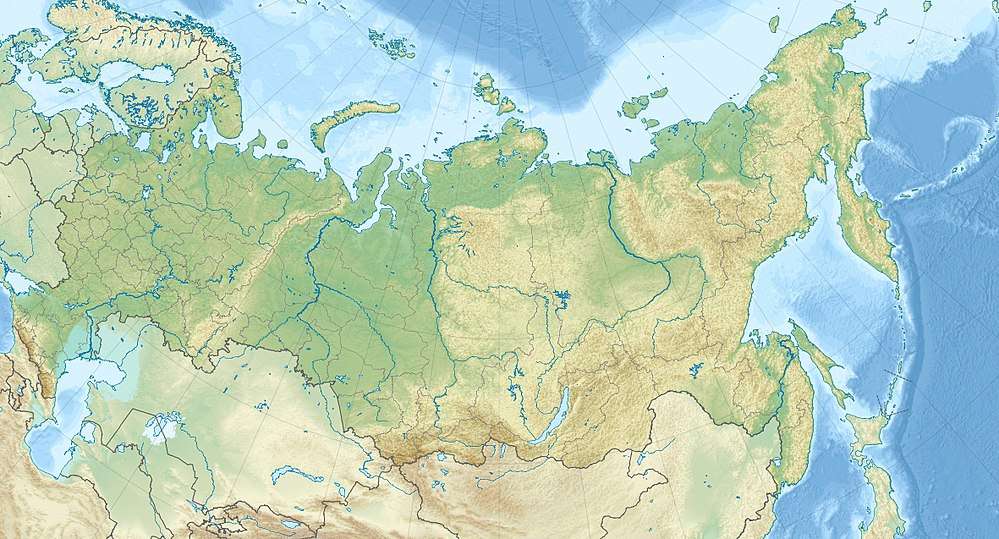Khilok Formation
The Khilok Formation is an Early Cretaceous geologic formation in Buryatia, Russia. While the lower portion of the formation consists of sandstones and conglomerates, the upper portion of the formation largely consists of trachybasalt, these deposits have been dated to the Aptian.[1] A thin 20 cm bed is known from the formation containing the remains of numerous indetermiate vertebrates, including dinosaur and pterosaurs and an indeterminate species of Kirgizemys.[2]
| Khilok Formation Stratigraphic range: Aptian ~120–113 Ma | |
|---|---|
| Type | Geological formation |
| Thickness | 900–1,400 m (3,000–4,600 ft) |
| Lithology | |
| Primary | Trachybasalt |
| Other | Conglomerate, sandstone |
| Location | |
| Coordinates | 50.7°N 107.9°E |
| Approximate paleocoordinates | 52.7°N 105.6°E |
| Region | Buryatia |
| Country | |
 Khilok Formation (Russia) | |
Fossil content
The following fossils were reported from the formation:[3]
- Reptiles
- Kirgizemys sp.
- Prodeinodon sp.
- Choristodera indet.
- Dromaeosauridae indet.
- Hypsilophodontidae indet.
- Ornithopoda indet.
- Ornithocheiridae indet.
- Scincomorpha indet.
- Testudines indet.
- Titanosauriformes indet.
- Amphibians
- Fish
gollark: It's efficient.
gollark: Wrong.
gollark: For efficiency.
gollark: I do, actually. All my data is just JSON strings in memory.
gollark: We designed octree strings ages ago.
References
- Zavialova, Natalia; Markevich, Valentina; Bugdaeva, Eugenia; Polevova, Svetlana (September 2011). "The ultrastructure of fossil dispersed monosulcate pollen from the Early Cretaceous of Transbaikalia, Russia". Grana. 50 (3): 182–201. doi:10.1080/00173134.2011.611530. ISSN 0017-3134.
- "Krasnyi Yar, Khilok River (Cretaceous of Russian Federation)". Paleobiology Database.
- Khilok Formation
This article is issued from Wikipedia. The text is licensed under Creative Commons - Attribution - Sharealike. Additional terms may apply for the media files.